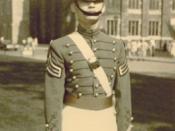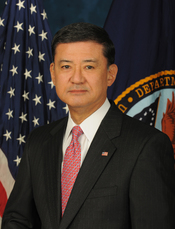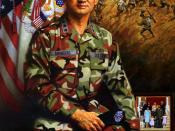Introduction
The future of today's army is dependent entirely on its ability to change as technology changes. A major technological and operational change that the U.S. Army is undergoing is its transformation into a light fighting force with the ability to quickly deploy smaller forces with greater fighting capabilities. This transformation into a light fighting force calls for the need of updated and improved uniforms for soldiers. One idea that is being considered for fielding is the wear of the black beret. This headgear is to be worn by all soldiers except those in an IET (initial entry training) status and those who serve in Airborne, Ranger, and Special Forces units.
Mission and Objectives
The whole idea of the beret started with one man's vision. General Eric Shinseki saw the need for an updated headgear to be worn by soldiers of the new millennium. He wanted the headgear to promote unity within the army.
That headgear was the black beret. Along with other key army officials, General Shinseki outlined what was needed in order to make his vision tangible. Financially, the army planned to spend $7.5 million to fill the order of having enough black berets for soldiers. Strategically, the army needed to find a company capable of filling the order of producing the berets.
Stakeholders
Now that his vision of a black beret wearing army has been adapted, GEN Eric Shinseki, the United States Army Chief of Staff, has to get the motors of his project up and running. Stakeholders needed to be identified and managed. Paying attention to stakeholders, both within and outside of the organization, is an important component when developing strategy. Understanding which stakeholders are likely to take notice of the intended strategy and what their particular support or sabotage processes may be, can yield...



Project Management within the United States Army.
Very well written and informative.
0 out of 0 people found this comment useful.